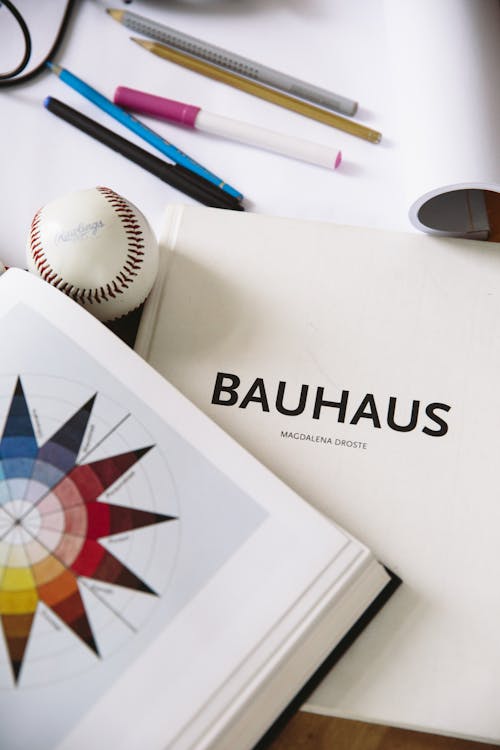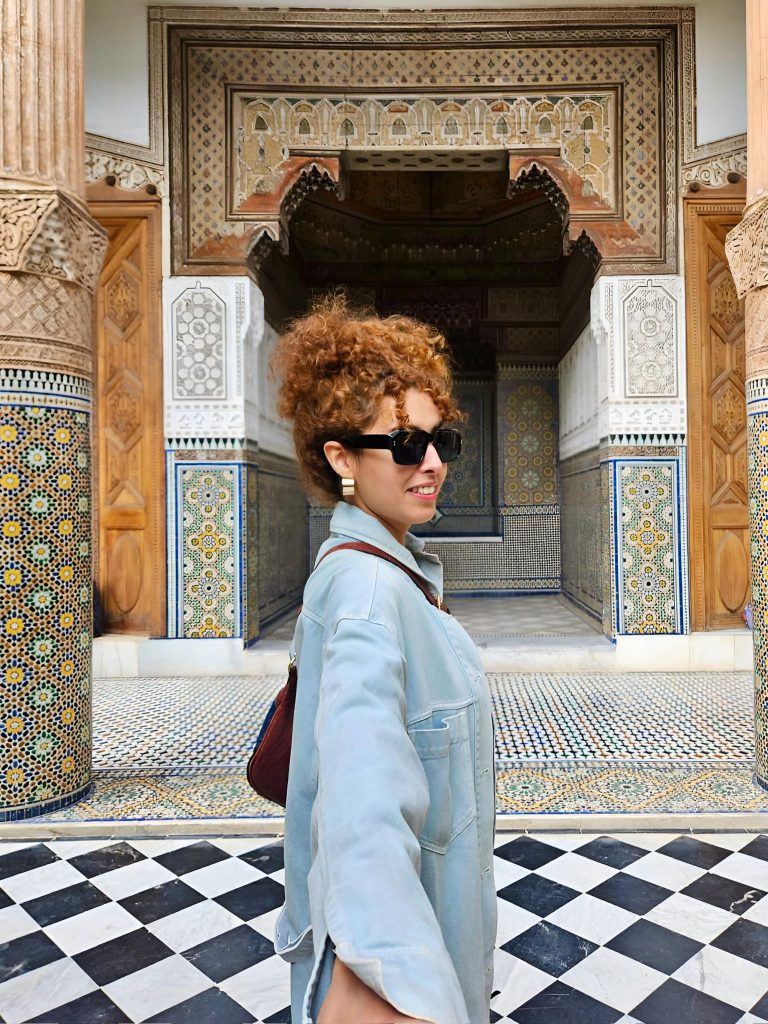From Practical to Iconic
The mid-20th century was a turning point for Moroccan rugs. These once-functional tribal textiles were reimagined by designers as symbols of modern sophistication. This shift wasn’t accidental—it was a blend of Bauhaus principles, postcolonial fascination, and a rejection of mass-produced goods. From mountain villages to global design exhibitions, Moroccan rugs became icons of style, reshaping both interiors and cultural perceptions in the world of Moroccan textiles.

Bauhaus Foundations: Geometry as Universal Language
The Bauhaus movement’s focus on clean, geometric designs naturally connected with Moroccan textiles. Designers like Paul Klee and Wassily Kandinsky admired Berber motifs during visits to North Africa. They saw the zigzags, diamonds, and asymmetrical patterns in Moroccan textiles as early examples of modern design. Klee even created a piece called Tunisian Rug in 1924, directly inspired by these tribal patterns.
Walter Gropius’ principle of “form follows function” aligned with Berber weaving traditions, where every pattern had a purpose. For example, arrows guided nomads, and diamonds protected against bad luck. Marcel Breuer took this connection further. During his Moroccan expeditions in the 1930s, he paired industrial materials like steel with handwoven Moroccan textiles. His designs, later showcased by Knoll, introduced Moroccan rugs to luxury homes and corporate spaces, blending tradition with modernity.
Le Corbusier and the Cult of Contrast
Le Corbusier played a key role in making Moroccan textiles an essential part of modern interiors. In his famous Villa Savoye (1929), he placed a Beni Ourain rug on a cold concrete floor. The soft texture of the rug balanced the hard, minimalist architecture. This idea—using plush Moroccan textiles to soften stark spaces—became a trend, later adopted by architects like Richard Neutra and Ludwig Mies van der Rohe.
Le Corbusier also romanticized Moroccan weavers, calling them “untainted by industrial corruption.” While this view popularized Moroccan textiles, it overlooked the complex cultural stories behind them. Still, his influence helped position Moroccan rugs as symbols of authenticity in a postwar world filled with mass-produced goods.

The Eames Effect: Democratizing Tribal Craft
Charles and Ray Eames introduced Moroccan rugs to American homes in the 1950s. During trips to Marrakech, they fell in love with Beni Ourain rugs and showcased them in their Pacific Palisades home. A famous 1952 photo shows a large cream-colored rug anchoring a room filled with their signature plywood chairs and wire sculptures.
Key Contributions:
- Modular Adaptation: Traditional Moroccan rugs rarely exceeded 7 ft in width due to nomadic loom sizes. The Eameses commissioned wider rugs (up to 12 ft) to suit suburban living rooms, collaborating with Marrakech cooperatives to standardize dimensions.
- Tactile Marketing: Their 1952 House of Cards photo series depicted rugs as foundational elements, with textures accentuated by dramatic lighting. This visual rhetoric was replicated in Herman Miller catalogs, which sold over 3,000 rugs by 1960.
- Color Experimentation: While Berber rugs traditionally used natural dyes, the Eameses encouraged weavers to adopt aniline dyes for brighter hues. The resulting “Eames Ochre” and “Desert Sage” became signature colors of 1950s interiors.
Scandinavian Modernism’s Unexpected Role
Scandinavian designers also embraced Moroccan rugs. Alvar Aalto used Boucherouite rugs in his minimalist designs, adding vibrant patterns to uplift spaces. Danish brand Artek began sourcing rugs from Fez, marketing them as “organic complements to Nordic simplicity.” This cultural fusion mirrors She&Elle’s philosophy of blending Moroccan heritage with Scandinavian living. To learn more about this connection, visit Why Morocco is Famous: 7 Must-Know Facts.
Commercialization and Cultural Tensions
The modernist embrace of Moroccan textile triggered significant economic and cultural shifts:
- Economic Impacts: By the 1960s, Moroccan rugs had become luxury items, with prices soaring in international markets. However, artisans often received minimal profits, as middlemen retained the majority of revenues.
- Design Adaptations: To cater to modernist tastes, traditional motifs were simplified, and synthetic materials were introduced, diluting the authenticity of the craft.
These challenges highlight why ethical practices are so important today. At She&Elle, we prioritize fair wages and cultural preservation by working directly with women artisans. Learn more about our mission at She&Elle of Morocco.
Legacy: From Fetishized Object to Cultural Reclamation
The mid-century modern movement left a mixed legacy. On one hand, it brought global attention to Moroccan rugs, helping preserve weaving traditions. On the other hand, it often commodified these rugs, stripping them of their cultural context. Today, artisans are reclaiming their craft through initiatives like QR code biographies and sustainable practices.
At She&Elle, we honor this legacy by offering handwoven rugs that celebrate both tradition and modern living. Explore our collection of Beni Ourain, Boujad, and Azilal rugs, crafted with care and sustainability in mind. Visit She&Elle of Morocco to discover more.

Conclusion: A Complex Tapestry
Moroccan rugs are more than just decor—they are stories woven into fabric. Their journey from tribal villages to modern interiors reflects the power of design to connect cultures. Whether you admire their history, craftsmanship, or timeless beauty, Moroccan rugs offer a unique blend of heritage and style.
For more insights into Moroccan design and culture, explore The Seasonal Celebrations of Morocco and Their Textile Traditions, How to Choose the Right Rug: Moroccan vs. Scandinavian Style in 2025, or What Colors Work Best? Morocco Meets Scandinavia in 2025. For a touch of Moroccan hospitality, check out Entertaining Moroccan Style: From Table Settings to Floor Textiles.


